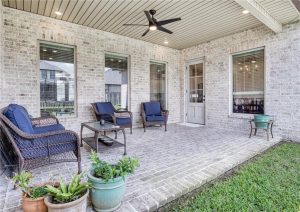The Evolution of Home Offices in a Post-Pandemic World
Despite companies’ fervent requests for employees to return to the office, the work-from-home (WFH) trend that took hold during the COVID-19 pandemic shows no signs of disappearing. The Wall Street Journal notes, “Around a quarter of total American workdays happened off-site in 2023. While that is down from more than 60% during the pandemic lockdowns in 2020, many expect working from home to become a permanent practice as hybrid models take root.” With this shift, home offices are evolving to be more dynamic, personal, and suited to collaboration. Here are six ways home offices are changing.
1. Multifunctional Rooms
Gone are the days when home offices were confined to closets or cramped corners. Today, WFH setups are integrated throughout the entire home, making nearly every room multifunctional. Joseph DiNapoli, co-founding principal of Study Architects in San Francisco, emphasizes the need for flexibility: “A CEO’s home theater could double as a meeting space or room for video calls. A covered outdoor area could function as an al-fresco office.”
To make these multifunctional spaces work, infrastructure such as robust Wi-Fi, flattering lighting for video calls, noise-dampening features, and versatile furniture are essential.
2. Enhanced Delivery Security
With more work being done at home, the need for secure delivery solutions has increased. To protect against “porch pirates,” MB Sentinel offers the Box Gobbler, a stainless steel parcel safe with keypad access and conveyor rollers. This secure delivery box ensures that important packages remain safe until retrieved.
3. Focus on Wellness
The time saved from commuting is often redirected towards wellness activities. Home designers are incorporating features that promote health and well-being, such as home-wide air purification systems, sun-tracking skylights, Wi-Fi-enabled meditation gardens, and fitness equipment integrated into workspaces. Porcelain tile flooring, which offers antimicrobial properties and durability, is becoming a popular choice for wellness-oriented home designs.
4. Video-Ready Workspaces
The rise of digital conferencing tools like Zoom and Teams has transformed the aesthetics of home offices. Bradley Nelson of Sotheby’s International Realty notes that workspace designs now incorporate “video-ready sightlines” that reflect the user’s identity while maintaining a professional appearance. This trend has also driven demand for high-quality digital meeting cameras, lighting, and microphones.
5. Homey Yet Functional Furnishings
As hybrid work becomes more permanent, people are seeking workspaces that blend the comforts of home with the functionality of traditional office furniture. Joseph DiNapoli’s company, for instance, is designing custom desks that look like dining tables but offer cable management and storage features. Companies like MillerKnoll are also producing office furniture that integrates better with home aesthetics.
6. Design Hacks for a Professional Look
Creating a professional yet warm home office can be achieved with design hacks like accent walls. Fusion™ thinBRIK from Acme, a glazed thin brick, can soften the look of a home office while providing a stylish backdrop for video calls.
A Worthwhile Investment
Investing in a well-designed home office can pay off, especially as many first impressions now happen via digital meetings. Consulting with an interior designer or architect can help create a professional yet inviting workspace. However, some challenges, like managing a barking dog during conference calls, may still require creative solutions.
Trust Armed Forces Insurance
For home insurance tailored to veterans and their families, trust Armed Forces Insurance. With over 135 years of experience, we offer personalized service to help you protect your home and property. Visit our homeowner insurance page to learn more.

